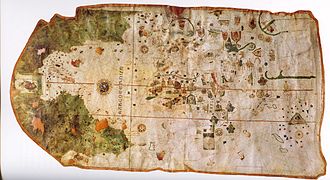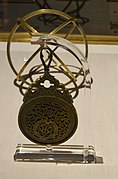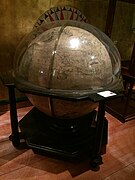
The Museo del Prado, officially known as Museo Nacional del Prado, is the main Spanish national art museum, located in central Madrid. It houses collections of European art, dating from the 12th century to the early 20th century, based on the former Spanish royal collection, and the single best collection of Spanish art. Founded as a museum of paintings and sculpture in 1819, it also contains important collections of other types of works. The numerous works by Francisco Goya, the single most extensively represented artist, as well as by Hieronymus Bosch, El Greco, Peter Paul Rubens, Titian, and Diego Velázquez, are some of the highlights of the collection. Velázquez and his keen eye and sensibility were also responsible for bringing much of the museum's fine collection of Italian masters to Spain, now one of the largest outside of Italy.

Admiral-General Luis Carrero Blanco was a Spanish Navy officer and politician. A long-time confidant and right-hand man of dictator Francisco Franco, Carrero served as Prime Minister of Spain. Upon graduating from the naval academy Carrero Blanco participated in the Rif War, and later the Spanish Civil War, in which he supported the Rebel faction. He became one of the most prominent figures in the Francoist dictatorship's power structure and held throughout his career a number of high-ranking offices such as those of Undersecretary of the Presidency from 1941 to 1967 and Franco's deputy from 1967 to 1973. He also was the main drafter behind the 1947 Law of Succession to the Headship of the State. Franco handpicked him as his successor in the role of head of government, with Carrero thereby taking office in June 1973.

Juan de la Cosa was a Castilian navigator and cartographer, known for designing the earliest European world map which incorporated the territories of the Americas discovered in the 15th century. De la Cosa was the owner and master of the Santa María, and thus played an important role in the first and second voyage of Christopher Columbus to the West Indies.

Juan de Pareja was a Spanish painter of multiracial descent. Born in Antequera, he is best known as a member of the household and workshop of painter Diego Velázquez, who enslaved Pareja until 1654. Pareja's 1661 painting The Calling of Saint Matthew is currently on display at the Museo del Prado in Madrid.

Juan Soriano was a Mexican artist known for his paintings, sculptures and theater work. He was a child prodigy whose career began early as did his fame with various writers authoring works about him. He exhibited in the United States and Europe as well as major venues in Mexico such as the Museo de Arte Moderno and the Palacio de Bellas Artes. His monumental sculptures can be found in various parts of Mexico and in Europe as well. Recognitions of his work include Mexico's National Art Prize, the Chevalier des Arts et Lettres and membership in France's Legion of Honour.

The Museo de Arte Moderno (MAM) is a museum dedicated to modern Mexican art located in Chapultepec Park in Mexico City.

Doña Antonia de Ipeñarrieta y Galdós and Her Son Don Luis is a 1634 portrait by Diego Velázquez, now in the Prado Museum. Doña Antonia and her son Luis are shown standing, captured in an elegant melancholy. The woman uses the chair to support herself, to emphasize her social status in the Court, where she had the right to sit. According to different studies of the canvas, it is believed that the child's figure could have been added afterwards.
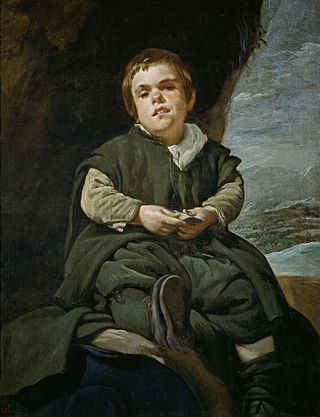
Portrait of Francisco Lezcano or The "Niño de Vallecas" is the 1645 portrait by Diego Velázquez of Francisco Lezcano, also known as Lezcanillo or el Vizcaíno, a jester at the court of Philip IV of Spain. It has been in the Prado since 1819.
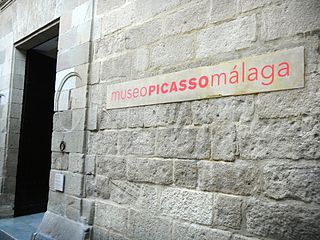
The Museo Picasso Málaga is a museum in Málaga, Andalusia, Spain, the city where artist Pablo Ruiz Picasso was born. It opened in 2003 in the Buenavista Palace, and has 285 works donated by members of Picasso's family. In 2009, the Fundación Paul, Christine y Bernard Ruiz-Picasso that owned the collection merged with the Fundación Museo Picasso Málaga that operated the museum, which is based in the home on Málaga's Plaza de la Merced that was Picasso's birthplace, and is now the Museo Casa Natal. The new merged foundation is the "Fundación Museo Picasso Málaga. Legado Paul, Christine y Bernard Ruiz-Picasso".
Diego Angulo Iñiguez was an art historian, a university professor, writer and Director of the Prado Museum in Madrid from 1968 to 1970.

Alfonso de Castilla y Molina was a Spanish noble in the service of the Kingdom of Castile. He was an Infante de Castilla, son of King Sancho IV de Castilla, King of Castile and of his wife, the Queen María de Molina.
Lilia Carrillo García was a Mexican painter from the Generación de la Ruptura, which broke with the Mexican School of Painting of the early 20th century. She was trained in the traditional style but her work began to evolve away from it after studying in Paris in the 1950s. While she and husband abstract artist Manuel Felguérez struggled to get their work accepted, even selling Mexican handcrafts and folk art to survive, she eventually had her canvas work exhibited at large venues in Mexico City and various cities in the world. Her work was part of the inaugural exhibition of the Museo de Arte Moderno in Mexico City in 1964. After her death in 1974, her work received honors from the Palacio de Bellas Artes and has been exhibited in various venues.

The Palacio Municipal de Caracas, or Consejo Municipal de Caracas, is the city hall of Caracas, Venezuela. It is located on the corner of Gradillas a Monjas opposite the Plaza Bolívar, occupying half of the plaza's southern section. The building dates from the seventeenth century but now bears the mark of Alejandro Chataing's Neoclassical additions in 1906. It was the focal point for the Constitutional Convention, and signing of the Declaration of Independence in the nineteenth century. The present building is the result of the work undertaken by the Venezuelan architect Alejandro Chataing in 1906. The west wing of the building, the Capilla de Santa Rosa de Lima, the chapel where Venezuela's independence was declared in 1811, has been fully restored and furnished with authentic period pieces. The ground floor houses the Museo Caracas, which contains works by Venezuela's most celebrated painters and many other historic artifacts. It was declared a National Historic Landmark on 16 February 1979.
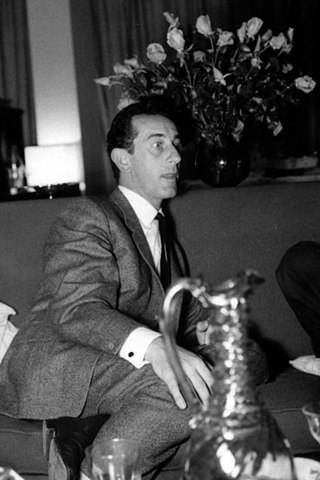
Antonio Peláez (1921–1994) was a Mexican artist of Spanish origin, who began his career in portraits but in the 1950s shifted to abstract art, concerned with texture, color and the use of space. His work was recognized by a retrospective at the Palacio de Bellas Artes, membership in the Salón de la Plástica Mexicana and a tribute by the Universidad Autónoma Metropolitana after his death.

The Palacio de la Ribera was the summer residence of Philip III in Valladolid. It was built in the 17th century (1602-1605) as part of a process of urban transformation upon the establishment of the Spanish Court in Valladolid between 1601 and 1606. The palace was situated at the Huerta del Rey neighborhood, located across the Parque de las Moreras on the right bank of the Pisuerga river. The palace grounds extended from the Puente Mayor to Ribera de Don Periáñez del Corral and delimited at both sides by the Pisuerga river and the Camino del Monasterio del Prado. The palace was gradually abandoned until it became part of the destroyed cultural heritage of Valladolid in 1761. Some ruins of the building are still preserved.

Rafael Monleón y Torres was a Spanish artist, archaeologist, historian and naval pilot.
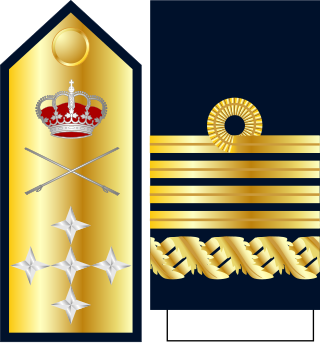
Captain general of the Navy is the highest naval officer rank of the Spanish Navy, rated OF-10 with the NATO ranking system. The routine honorary appointments formally ceased in 1999. The rank of captain general of the Navy is equivalent to an admiral of the fleet in many nations, a captain general of the Spanish Army or a Captain general of the Air Force in the Spanish Air and Space Force.

Excursion in the Countryside of Infanta Isabel Clara Eugenia is an oil on canvas painting by Flemish artists Jan Brueghel the Elder and Joos de Momper. It was painted in the first quarter of the 17th century, and is housed at the Museum of Prado, in Madrid.

The Philippines Exposition was a colonial exhibition held in the main park in Madrid, the Parque del Buen Retiro, in 1887 in order to boost commercial and economic relations between the archipelago of the Philippines and the metropolis. Buildings erected for the exhibition such as the Palacio de Cristal survive to the present day.




